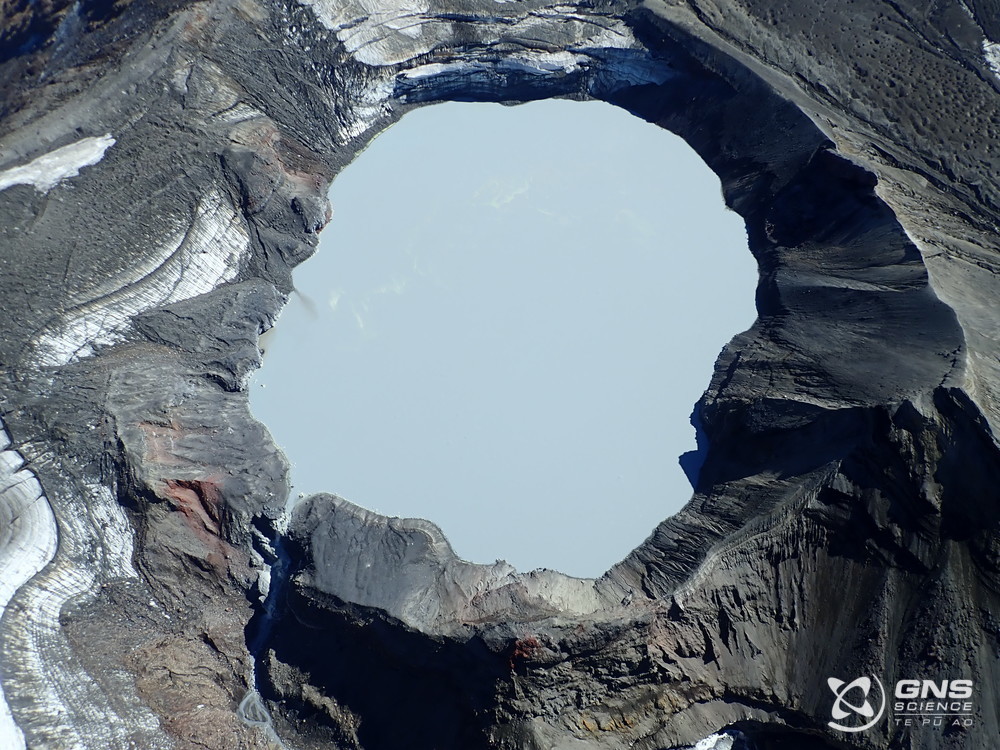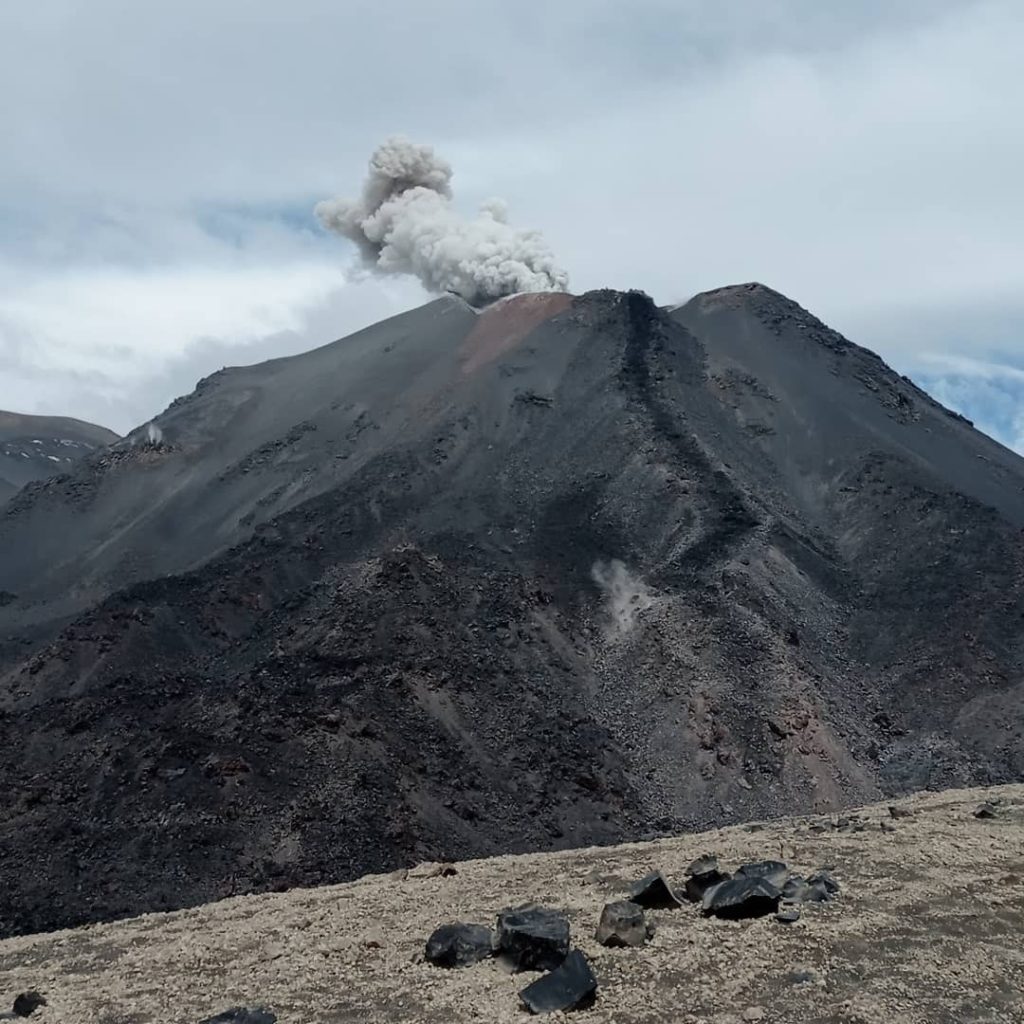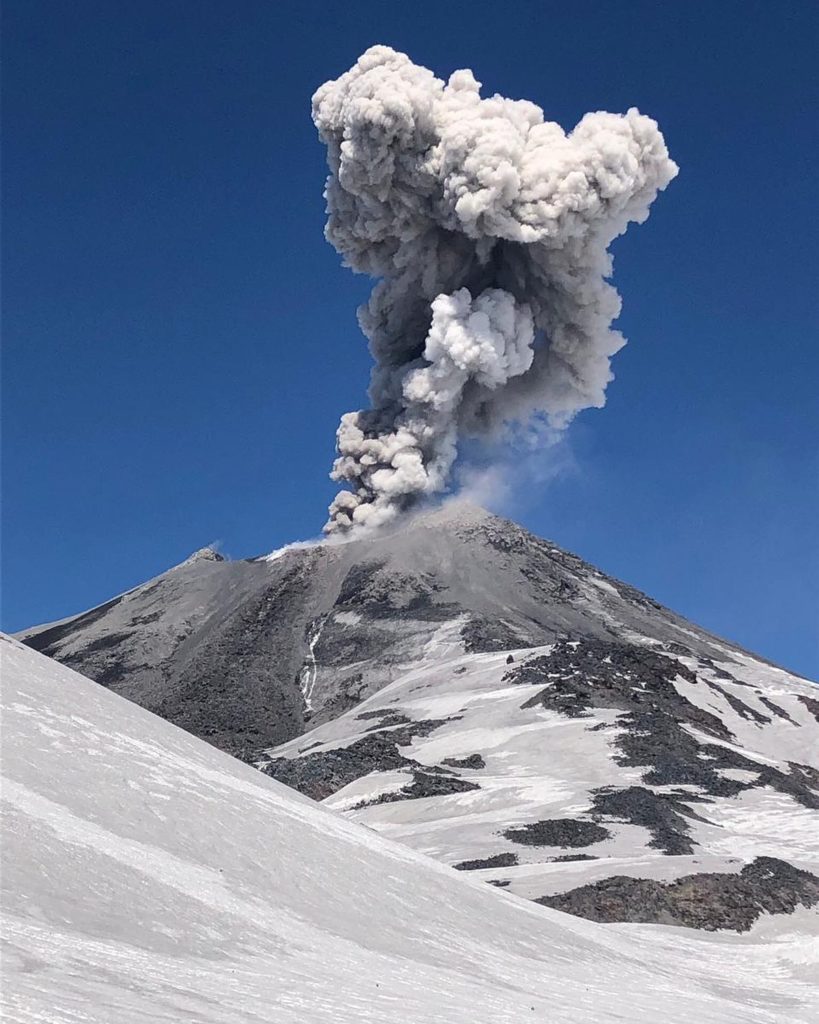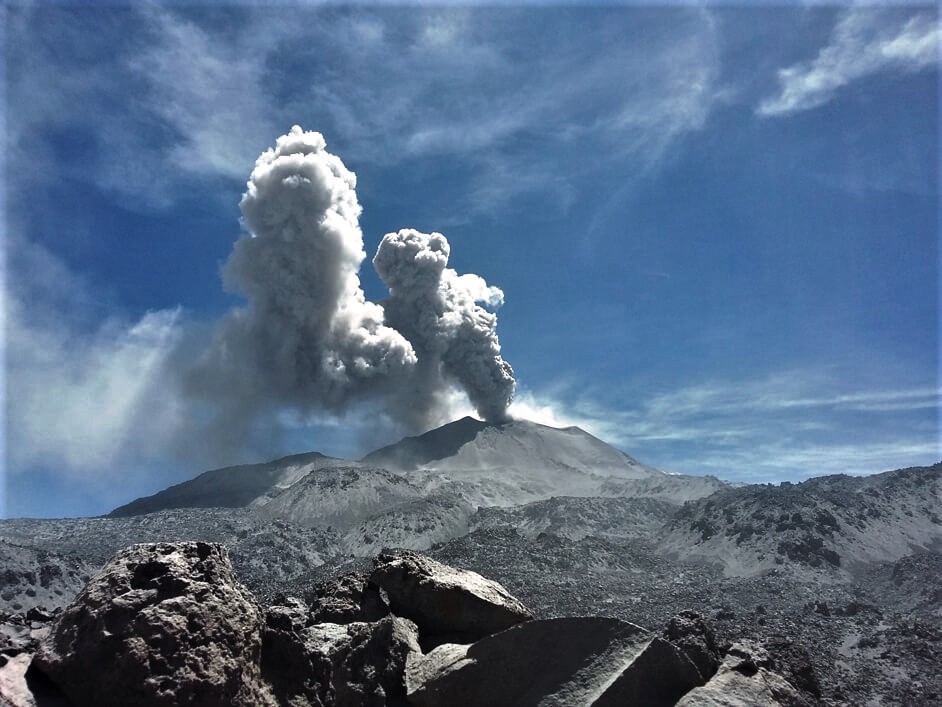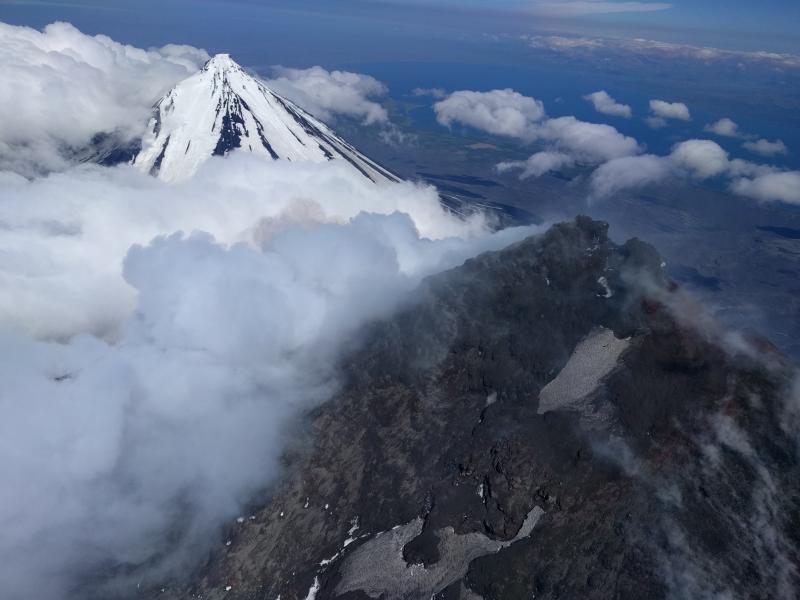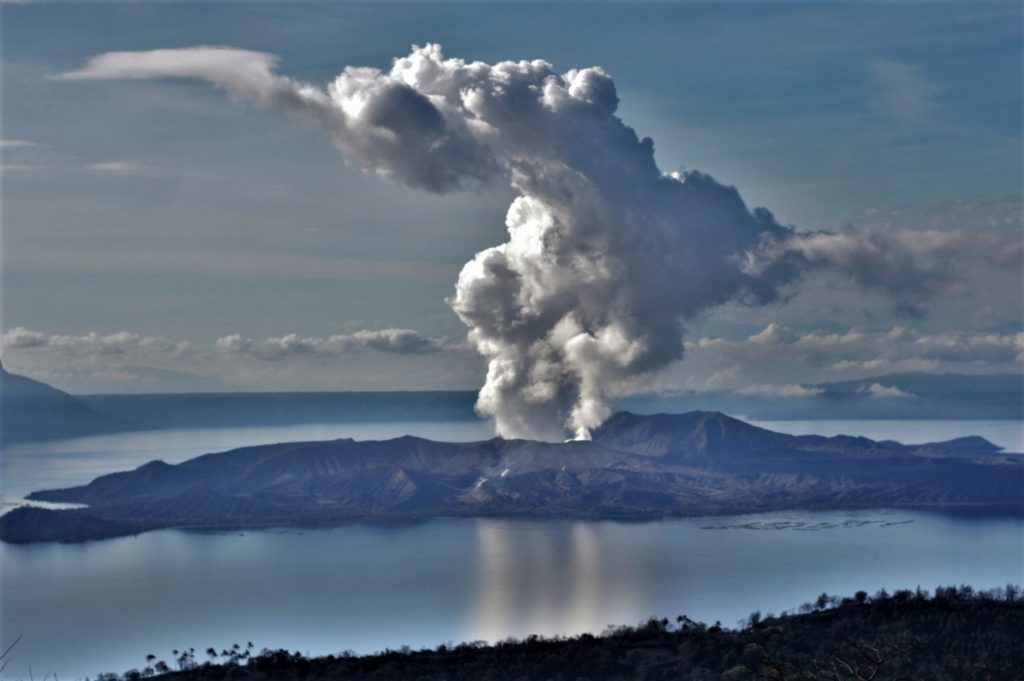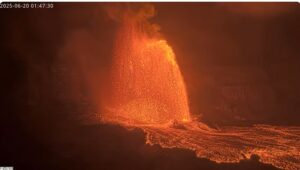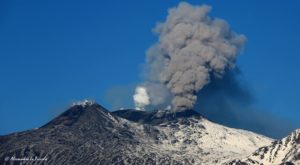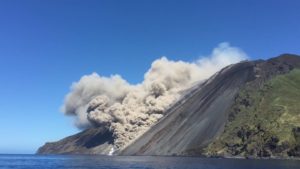April 12 , 2022.
New Zealand , Ruapehu:
Mt Ruapehu elevated volcanic unrest continues. Volcanic Alert Level remains at Level 2. Tuesday April 12, 2022 14h15
Elevated levels of volcanic unrest continue at Mt Ruapehu primarily manifested as strong volcanic tremor, slowly rising Crater Lake (Te Wai ā-moe) temperatures and high gas outputs. These changes indicate magma may now be driving the unrest, increasing the chances of further activity. The Volcanic Alert Level remains at Level 2.
Over the past seven days, the elevated volcanic unrest has continued at Mt Ruapehu increasing to heightened levels. This heightened unrest is primarily manifested as volcanic tremor and increased gas output. The tremor levels remain elevated but have declined from the peak reached on 6-7 April 2022. An airborne gas flight completed yesterday has confirmed an increase in gas output through the Crater Lake, in particular of CO2 (Carbon Dioxide) gas, being the 2nd highest ever recorded value.
The Crater Lake (Te Wai ā-moe) temperature is now 38 °C. Our modelling suggests that about ~280 MW of heat is required to sustain this lake temperature. Temperature and heat input remain within the typical range for a heating cycle. The crater lake remains a battleship grey colour with upwellings at the northern vents area and a small overflow. Sulphur slicks are present on the lake surface.
The sustained nature of the volcanic unrest now differs from those typically seen during the start of a heating phase. The volcanic tremor signals and elevated gas output are now more indicative of processes being driven by molten rock (magma) interacting with the geothermal system at depth in the volcano.
The most likely outcome of this unrest episode is no eruptive activity occurs, as no eruptions have followed unrest in the past 15 years. However, there is also a possibility of a single or multiple eruption that could impact the summit area and generate lahars into some catchments draining off the volcano, especially the Whangaehu Valley. The size of these eruptions, if they did occur, would probably be like the September 2007 event.
The chances of a prolonged and larger eruption, such as occurred in 1995-96 with wider ashfall impacts, is possible, but remains very unlikely. Such an eruption would most likely only follow a sequence of smaller eruptions.
The interpretation of this activity is consistent with elevated volcanic unrest at the heightened level and therefore the Volcanic Alert Level remains at Level 2. The Aviation Colour Code remains at Yellow.
Mt Ruapehu is an active volcano and has the potential to erupt with little or no warning when in a state of elevated volcanic unrest.
The Volcanic Alert Level reflects the current level of elevated volcanic unrest. The Volcanic Alert Level should not be used to forecast future activity. However, at Volcanic Alert Level 2, eruptions are usually more likely than at Volcanic Alert Level 1.
Volcanic Alert Level 2 indicates the primary hazards are those expected during volcanic unrest; steam discharge, volcanic gas, earthquakes, landslides and hydrothermal activity. While Volcano Alert Level 2 is mostly associated with volcanic unrest hazards, eruptions can still occur with little or no warning.
Source : Geonet / Brad Scott / Volcanologue de service
Photos : GNS Science , Brad Scott .
Chile , Nevados de Chillan :
Nevados de Chillán Volcanic Complex
SISMOLOGY
Volcano-tectonic (VT) seismicity recorded a total of 35 events caused by brittle rupture processes; the most energetic had a local magnitude (ML) equal to 1.9, located 5.3 km east-south-east of the volcanic edifice, with a depth of 4.4 km. This seismicity, which was spatially and temporally linked in the previous phases of this eruptive cycle with changes in the deformation of the volcanic edifice, remains at low levels compared to periods of greater activity.
Long-period (LP), explosion (EX) and tremor (TR) seismicity continues to be recorded, associated with fluid dynamics within the volcanic system. 958 LP-type earthquakes were classified, including 329 linked to explosions at surface level, due to the presence of acoustic waves and/or gaseous emissions, often with particle input. The size of the largest LP-type earthquake estimated from the reduced displacement parameter (DR) reached a value equal to 446 cm2, and was associated with an explosion that generated an emission of proximal pyroclastic flows on the surface.
Regarding TR type seismicity, 340 episodes were identified, the most important of which reached a DR of 69 cm2. The daily seismic energy levels observed during the evaluation period remained at a level considered low, but with a transient increase linked to the continuous extrusion of the effusive body, an event which was reported in the last report. special (REAV, March 17, 2022, 7:30 p.m. HL).
FLUID GEOCHEMISTRY
Data on sulfur dioxide (SO2) emissions obtained by optical differential absorption spectroscopy (DOAS) equipment, corresponding to the Philippi and Chillán stations, installed 1.5 km to the South-South-East (SSE) and 2.7 km east-southeast (ESE) of the active crater, respectively, showed an average value of 537 ± 140 t/d, with a maximum daily value of 1098 t/d, recorded on 28 March. An increase in SO2 levels is observed, consistent with the presence of a new effusive body inside the active Nicanor crater.
No anomalies were reported in sulfur dioxide (SO2) emissions to the atmosphere.
SATELLITE THERMAL ANOMALIES
9 thermal alerts were recorded in the area associated with the volcanic complex during the period, with a maximum Volcanic Radiative Power (VRP) of 12 MW on March 31, a value considered moderate according to data processed by the Middle Infrared of Observation of Volcanic Activity (MIROVA, http://www.mirovaweb.it/).
At the same time, according to the analytical processing of satellite images (Sentinel 2-L2A in combination of false color bands), luminance anomalies were observed on March 16, 21, 24, 26 and 31 with an estimated maximum luminance zone to 800 m2 on March 24.
GEODESY
According to the data provided by the geodetic network composed of 5 GNSS stations and 3 electronic inclinometers, which makes it possible to measure the deformation in the complex, displacements which clearly mark a deflationary trend have been observed in the GNSS stations, indicating a maximum of subsidence northwest of the active crater. Regarding the monitoring lines, during the current period, there is a general tendency for the distance between GNSS stations to shorten, with maximum rates of –0.50 cm/month and a sag in the component vertical, with a maximum rate of change of -0.51 cm/month.
SURVEILLANCE CAMERAS
Explosive surface activity was recorded from the active crater, with the generation of eruptive columns dominated by water vapor and occasionally, larger columns containing grayish ash-like particles, whose maximum height is 1 680 m above the crater.
The highest column heights were recorded on March 15 (1560 m), March 25 (1560 m), March 30 (1680 m) and March 31 (1380 m). The high particulate matter explosions generated pyroclastic flows to the southeast and east flanks, with a maximum range of 460 m from the crater rim. In addition, on March 25, gravitational flows to the northwest of the active crater with an approximate range of 500 m were recorded.
In terms of nocturnal explosive activity, an incandescence of low intensity and occurrence was observed, limited to the active crater. The largest demonstrations occurred on March 23, 25 and 31, generating glowing fragments with a range of approximately 500 northeast and north of the volcano.
Source : Sernageomin.
Read the full article : http://sitiohistorico.sernageomin.cl/reportesVolcanes/20220411122707311RAV_20220408_%C3%91uble_v6.pdf
Photos : Sernageomin , @nluengov
Peru , Sabancaya :
Analysis period: from April 04, 2022 to April 10, 2022, Arequipa, April 11, 2022.
Alert level: ORANGE
The Geophysical Institute of Peru (IGP) reports that the eruptive activity of the Sabancaya volcano remains at moderate levels, that is to say with the recording of an average of 52 daily explosions, with columns of ash and of gas up to 2.5 km altitude above the summit of the volcano and their subsequent dispersion. Therefore, for the following days, no significant change is expected in eruptive activity.
The IGP recorded and analyzed the occurrence of 231 earthquakes of volcanic origin, associated with the circulation of magmatic fluids inside the Sabancaya volcano. An average of 52 explosions was recorded daily, in addition to recording Volcano-Tectonic (VT) type events associated with rock fracturing inside the Sabancaya volcano.
Monitoring the deformation of the volcanic structure using GNSS techniques (processed with fast orbits) does not show any significant anomalies. However, in general, an inflation process was observed in the northern sector (surroundings of the Hualca Hualca volcano). Visual surveillance identified columns of gas and ash up to 2.5 km above the summit of the volcano, which were dispersed towards the East, Southeast and South sectors of Sabancaya. Satellite recordings have identified the presence of 3 thermal anomalies, with a maximum value of 06 MW, associated with the presence of a lava body on the surface of the crater of the volcano.
RECOMMENDATIONS
• Keep the volcanic alert level orange.
• Do not approach within a radius of less than 12 km from the crater.
Source : Cenvul
Photo : archive ingemmet.
Alaska , Pavlof :
55°25’2″ N 161°53’37 » W,
Summit Elevation 8261 ft (2518 m)
Current Volcano Alert Level: WATCH
Current Aviation Color Code: ORANGE
Eruptive activity continues at Pavlof. Seismic tremor was present throughout the past day but no explosions were detected. Satellite images during brief periods of clear weather continue to show elevated surface temperature near the summit. Web camera and most satellite observations were obscured by clouds over the past day.
Small explosions associated with the current eruption could happen at any time and may be accompanied by small ash plumes within the immediate vicinity of the volcano. The level of unrest at Pavlof can change quickly and the progression to more significant eruptive activity can occur with little or no warning.
Pavlof is monitored by local seismic and infrasound sensors, satellite data, web cameras, and remote infrasound and lightning networks.
Source : AVO
Photo : Izbekov, Pavel / Alaska Volcano Observatory / University of Alaska Fairbanks, Geophysical Institute.
Philippines , Taal :
TAAL VOLCANO BULLETIN 12 April 2022 8:00 AM
In the past 24-hour period, the Taal Volcano Network recorded seven (7) volcanic earthquakes, including five (5) volcanic tremor events having durations of two (2) to three (3) minutes, and two (2) low-frequency volcanic earthquakes. Activity at the Main Crater was dominated by moderate degassing that generated plumes 600 meters tall. Sulfur dioxide (SO2) emission was below instrumental detection limits on 11 April 2022. Temperature highs of 63.7°C were last measured from the Main Crater Lake on 25 February 2022. Based on ground deformation parameters from electronic tilt, continuous GPS, and InSAR monitoring, Taal Volcano Island and the Taal region has been deflating since October 2021.
Alert Level 2 (Decreased Unrest) prevails over Taal Volcano. DOST-PHIVOLCS reminds the public that at Alert Level 2, sudden steam-driven or phreatic explosions, volcanic earthquakes, ashfall and lethal accumulations or bursts of volcanic gas can occur and threaten areas within TVI and along its coast. Entry into TVI, Taal’s Permanent Danger Zone, must therefore be strictly prohibited.
Source : Phivolcs
Photo : Richard Langford

